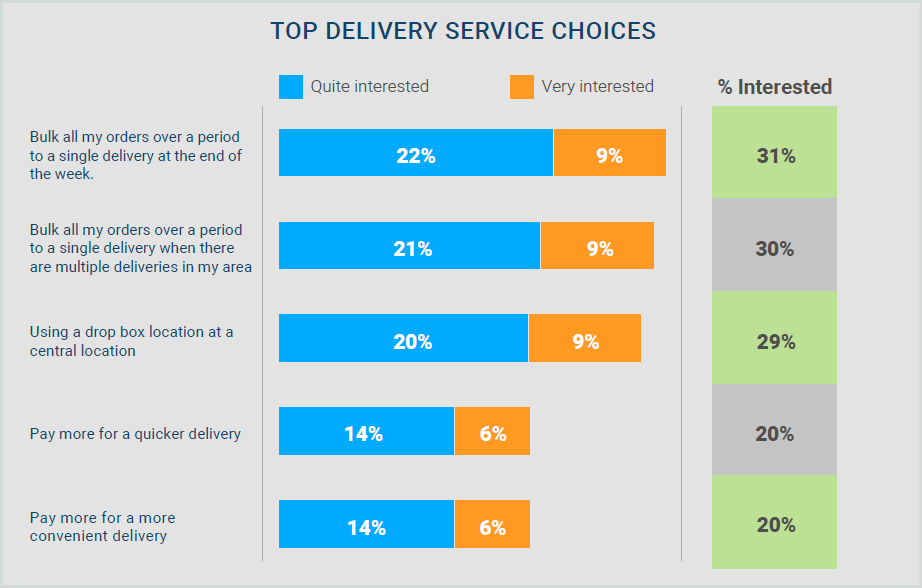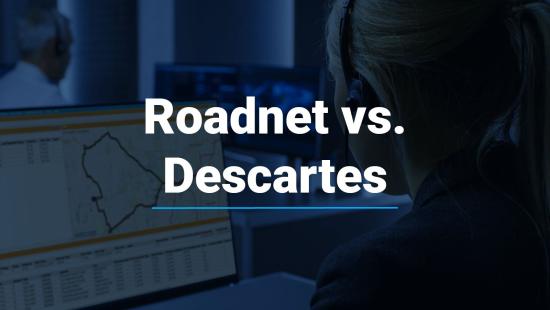How Understanding Delivery Personas Will Change Your Home Delivery Top- and Bottom-Line Performance
In home delivery there is an “arms race” when it comes to delivery speed. One company, however, is incentivizing customers to slow down their delivery speed by giving them a discount: Amazon.
Yes, Amazon, the same company that made 2- and even 1-day delivery a standard service (with Prime) and that has made numerous announcements recently about grocery deliveries within hours. If immediacy is such a big deal and Amazon has been the vanguard of fast, why take this approach?
Delivery Success is About Profitable Choice
Because some products cost too much to deliver relative to the revenue received from the product. While Amazon has changed the game in delivery, it has also recognized that it needs to offer options that don’t crush the bottom line. Delivery success is not just about choice—it’s about profitable choice—and that lesson applies to B2B as well as B2C businesses.
Nothing like reality to prove a point. I bought a small, inexpensive item on Amazon; it cost $7.99 and could fit in the palm of my hand. Since I am an Amazon Prime member, the free 2-day shipping appeared when checking out ALONG with another delivery option that would give me $1.00 off another purchase if I waited 7-10 days to receive the item.
It’s not too hard to do the math that a 2-day shipment of something that cost 8 bucks and weighed a couple of ounces is a loss leader. For those of you who pay for Amazon Prime like me, you might say that Amazon Prime subscription fees covered the shipping cost, but apparently not enough in my case.
Needless to say, I opted for the 2-day delivery, but I am sure others would have taken the buck and waited over a week to get their stuff. That’s the real story here.
Effective Segmentation Creates Opportunity
Amazon recognized that there are different kinds of delivery personas for customers and, just like we segment customers based upon buying patterns, we need to understand their delivery segmentation. Not only can delivery costs be lowered, but there is also a significant opportunity to gain revenue with the right segmentation strategy.
The following chart is a simple way to understand how to think about customer delivery personas based upon the speed and precision (time window) of the delivery.

Based on benchmarking retailer and distributors strategies and tactics over the last several years at Descartes, we identified four basic customer delivery personas. While one is no better than another or applies in every business situation, some combination will provide the right balance of service, cost and even incremental revenue.
Cost, Cost, Cost
This is a self-explanatory delivery choice. These customers are extremely cost-sensitive and will take the slowest delivery service if it saves them money. They are willing to wait days for the product and care less when the delivery arrives during the day.
Parcel Mentality
Typical parcel deliveries are fast, but not necessarily time definite at the point of purchase. The majority of goods such as apparel and other smaller items are delivered this way. These customers are happy with the fast delivery cycle and don’t care if the package is left at the doorstep sometime during the day.
EBOOK
Home Delivery Best Practices
Engaging the customer from purchase to post-delivery enhances the customer experience, improves delivery success and reduces the cost to keep customers informed. Delivery information is the cornerstone of an end-to-end engagement strategy from confirming the delivery appointment, to notifying that the delivery is underway, tracking the delivery progress, documenting the delivery and measuring the delivery experience. Download the eBook to learn more.
Convenience Matters
Many large format items fit into this category. These customers don’t value fast; they value a tight time window. For instance, when I renovated my kitchen, I purchased five appliances, but didn’t want them delivered the next day because they would have taken up half my garage for five weeks until the kitchen was ready for them.
Instead, I wanted them on a specific date and time when my contractor said he was ready to install the appliances.
Time Is Their Currency
There is a class of customers who are cash rich and time poor, or spend a lot of money if the goods aren’t delivered in a tight time frame. They want their delivery ASAP and won’t sit around waiting all day for it.
This can be high-value impulse purchase goods, replacement items or even building materials for example. These customers are also most likely to pay for the privilege and it doesn’t take too many of them to offset a significant amount of the overall delivery costs.
Retailers need to stop thinking that customers are monoliths when it comes to home delivery strategy and services. It clearly pays to understand the buying AND delivery personas of customers if retailers want to maximize top- and bottom-line performance.
Delivery option choice also has broader dimensions in that customers will happily self-select based upon their persona and treat it as improved customer experience.
What is your company doing to associate delivery personas to its customer delivery strategy?
Fleet Resource Center
Expand Your Routing, Mobile & Telematics Knowledge
Recommended For You



